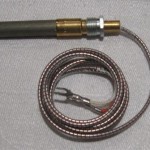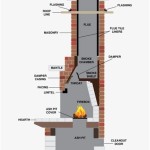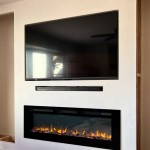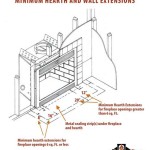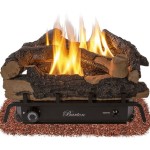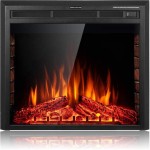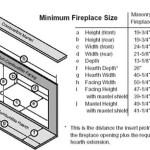How to Refill an Ethanol Fireplace
Ethanol fireplaces, with their sleek designs and clean-burning fuel, offer a charming and convenient way to add warmth and ambiance to any space. However, like any fuel-powered device, they require regular refilling to maintain their functionality. Understanding how to refill an ethanol fireplace safely and efficiently is crucial to ensure optimal performance and prevent potential hazards. Here's a step-by-step guide to guide you through the process.
1. Safety First: Essential Precautions
Before embarking on refilling your ethanol fireplace, prioritizing safety is paramount. Ethanol is a flammable liquid, and mishandling it can result in accidents. Here are some key safety precautions to follow:
- Turn off the fireplace: Ensure the fireplace is completely extinguished and cooled down before proceeding with refilling. This prevents any accidental ignition during the process.
- Ventilation is crucial: Ensure adequate ventilation in the room where the fireplace is located. Open windows or doors to allow fresh air circulation and prevent the buildup of flammable vapors.
- Avoid open flames and heat sources: Keep the refilling area free from any open flames, such as candles or gas appliances. Similarly, avoid using the fireplace near any heat-producing sources, like electric heaters or stoves.
- Use appropriate containers: Always use the designated containers for ethanol fuel provided by the manufacturer. Avoid using improvised containers or bottles that might not be compatible with the fuel and could compromise safety.
- Keep children and pets away: Ensure children and pets are kept away from the refilling area. Their curiosity and potential for accidental contact with the fuel can be hazardous.
2. Refilling Procedure: A Step-by-Step Guide
Once you've taken necessary safety precautions, you can proceed with refilling your ethanol fireplace. The following steps outline the process:
- Locate the fuel tank: The fuel tank is typically located in a discreet area of the fireplace, often concealed by a decorative panel or cover. Consult your owner's manual for the exact location. Remove any covers or panels to access the tank.
- Inspect the fuel level: Before refueling, check the fuel level in the tank. Most ethanol fireplaces have a clear window or gauge that indicates the fuel level. Refilling is necessary when the fuel level drops below a certain threshold, typically indicated in your manual.
- Use the designated container: As mentioned earlier, always use the container specifically designed for storing and dispensing ethanol fuel provided by the manufacturer. Avoid using other containers, as they may not be compatible with the fuel and could pose a safety risk.
- Pour the fuel slowly and carefully: Slowly pour the ethanol fuel into the tank, avoiding spillage or overfilling. Overfilling can create a fire hazard as it might lead to fuel spilling over the tank's edge.
- Replace the cover: After refueling, securely replace the cover or panel that conceals the fuel tank, ensuring a proper seal. This prevents accidental spills or vapors from escaping.
- Ventilate the area: After refilling, allow the area to be ventilated for a few minutes to dissipate any remaining ethanol vapors. This ensures a safer environment and reduces the risk of ignition or accidental fires.
3. Troubleshooting and Maintenance Tips
While refilling your ethanol fireplace is a straightforward process, occasional troubleshooting and maintenance are essential for optimal performance and longevity. Here are some tips:
- Ensure a consistent fuel supply: Always maintain a consistent supply of ethanol fuel to ensure uninterrupted enjoyment of your fireplace. Check the fuel level regularly and refill it as needed.
- Clean the burner regularly: Over time, the burner of your ethanol fireplace can accumulate soot and debris, affecting its performance. Cleaning the burner with a soft brush or vacuum cleaner helps maintain optimal combustion and efficiency. Refer to your owner's manual for specific cleaning instructions.
- Inspect the fuel lines: Regularly inspect the fuel lines for any signs of damage or leaks. Any leaks can lead to safety hazards and require immediate attention. Consult a qualified technician for repairs or replacements.
- Store fuel properly: Store your ethanol fuel in a cool, dry, and well-ventilated location away from direct sunlight, heat sources, and open flames. This prevents the fuel from degrading or becoming flammable. Follow the manufacturer's storage guidelines for optimal safety.
By following these safety precautions, refilling procedures, and maintenance tips, you can ensure your ethanol fireplace operates efficiently and safely, providing you with years of warmth and ambiance.

Capri Bioethanol Fire

Manual Or Electronic Ethanol Fireplaces Burners By Afire

Choosing The Perfect Bio Ethanol Fireplace Manual Vs Automatic Models

How Does A Bioethanol Fireplace Work Read Complete Guide Here

Choosing The Perfect Bio Ethanol Fireplace Manual Vs Automatic Models

How To Re Fuel And Operate Your Chesneys Fb18 Bioethanol Fire

Planika Choose Safety Automatic Ethanol Fireplaces No More Concerns With Dangerous Manual S

Choosing The Perfect Bio Ethanol Fireplace Manual Vs Automatic Models
_47738.jpg?strip=all)
Bio Fireplace Insert For Existing Or Hearth

Modern Bio Efficient Ethanol Fireplaces Vitcas Blog

